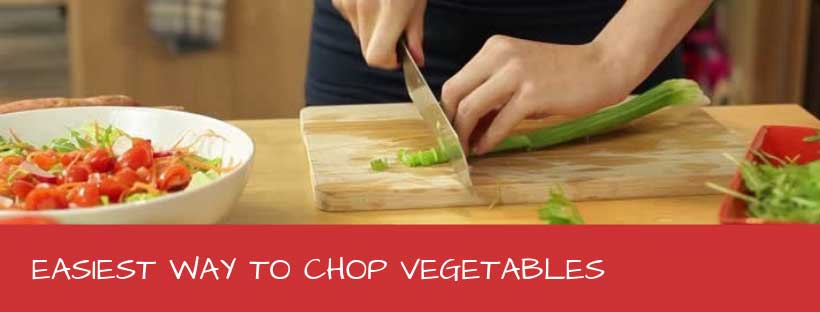
Best Way to Chop Vegetables to Make Cooking Easier
Chopping Vegetable is among the first skills learned by a professional chef. But even if you are not going to become a chef, you should know how to chop vegetables, if you used to cook sometime at home.
If you have a couple of chopping techniques up your sleeve, you will be able to chop your foods safely and efficiently. And besides, you’ll be able to show off your kitchen knife handling skills.
Let’s now see what you should do to find the easiest way to chop vegetables!
Getting the cutting space ready
Choose the right cutting board
Using the right kind of cutting board can make your life easier.
The main types of cutting boards available out there are plastic, bamboo, and wood. Plastic cutting boards are lightweight and tend to be cheaper. But they aren’t very easy to clean, and knife scars forming on them will soon or later render them unusable.
Wood boards have natural antiseptic properties, which can help them stay clean. Bamboo boards have similar properties, but they are harder than wood and may dull your knives quicker.
Avoid stone, glass, or metal cutting boards. They will quickly dull your knives.
In addition, you may want to have two cutting boards – one for fruit or veggies and one for meat.
Choose the right knife
8-10-inch chef knives are commonly used for chopping, so you should go for one. Smaller knives can easily become stuck in food. Besides, you may cut yourself with a small knife.
A chef’s knife is going to have a slight curve, which would allow you to rock the knife back and forth while chopping. The proper knife should feel balanced and a bit heavy in your hands as well.
Place the cutting board
While chopping, your cutting board needs to stay motionless. Some cutting boards have a good grip with the table and won’t slide away. But others will require you to take some measures.
To prevent your cutting board from sliding all over the table, place a damp cloth beneath it. Alternatively, you could use wet paper towels or non-slip mats. The kitchen or the place where you used to put your cutting board need to be grease-free, clean and hygiene for health safety.
Keep the knife sharp
A dull knife is more likely to slip while chopping, so you should always keep your knife sharp. And the more you use your knife, the more frequently you’ll have to sharpen it. Professional chefs sharpen their knives every day since they use them all the time.
Electric knife sharpeners are the best when it comes to convenience and speed of sharpening. They are also safer than sharpening stones that require you to do the sharpening manually. Alternatively, you could opt for a professional sharpening service if you don’t feel comfortable sharpening a knife.
Learn to position your hands
Hold the knife with your dominant hand
Hold your knife’s handle with your dominant hand. While gripping the handle, your index finger and thumb should be positioned on the blade, right in front of the bolster where the blade meets the handle. Gripping the blade will provide you with more control for the chopping. In addition, the range of motion of the knife is increased when your thumb and index fingers are on the blade. To hold the knife properly, make sure that your fingers are as if pinching the blade.
Hold the food with your subordinate hand
Your free subordinate hand needs to hold the food steady while you are chopping it. To position your subordinate hand safely, curve your fingers towards your palm to form a claw from your hand. Initially, this hand position may seem unnatural, but it is the best way of holding food safely.
Keep the thumb of the subordinate hand safe
You need to tuck in the thumb of your subordinate hand to keep it safe. If the thumb just sticks out, you are likely to cut it. Thereby, you need to do some practice to keep the thumb in at all times. If you notice that your thumb sticks out while practicing, stop, tuck in your thumb, and only then continue. You may go slower to make practicing a bit easier. In addition, the knuckles of your thumb and other fingers should be closer to the blade than the fingertips. Ideally, the knife should bump against the knuckles when chopping food quickly. Make sure you do this right otherwise you run a risk of cutting the fingertips.
Use chopping techniques
Use the cross chop
The cross chop is the best way to chop vegetables and other foods if you are a beginner.
First of all, place the food on the cutting board and hold your knife with the dominant hand. Open your subordinate hand and lay your palm on top of the blade.
Keep the fingers of your subordinate hand straight and out while the other hand rocks on the blade to chop the food. Continue to chop the food until it is as small as you want.
Because the cross chop makes rough pieces, it is good for foods that will cook down.
Let’s watch a video.
Use the tap chop
The tap chop technique is suitable for chopping food into slices.
To hold the food in the tap chop, you keep your subordinate hand in the traditional claw shape. While tap chopping, your thumb holds the food steady.
To begin chopping, raise the blade straight up, making sure that its tip stays in contact with the cutting board. Then, bring the blade down to make a slice. Continue to chop and walk your fingertips back the food to keep it at a distance from the blade.
Let’s watch a video.
Use the rock chop
Small items requiring fine chopping like garlic or fresh herbs are rock chopped.
Gather the food together in the center of the cutting board and place the fingertips of your subordinate hand on top of the blade. Using the handle of the knife, rock the blade up and down to chop the food. Make sure to keep the blade steady with your subordinate hand while rocking.
After doing a pass, scoop the food into a pile again so you can chop it into finer slices. Continue to do this until the food is as fine as you need.
Let’s watch a video.
Now see the real chopping methods for few tricky-to-cut vegetables. But, veggies are actually easy to cut if you know how to organize it as it should be.
How to cut onion
Chopping an onion is an everyday kitchen tasks for a cook. It is also one of the easiest tasks if you know the right way to do it. Let’s check out the easiest way of chopping an onion in various shapes.
How to Dicing or Mincing an Onion
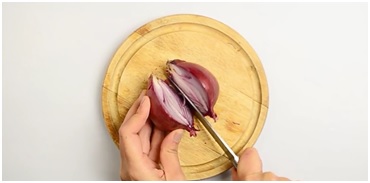
First you need a chopping board and a sharp knife to chop an onion. Place the onion on its side on the chopping board and cut it on half longwise so that both the part has a root at one end, and a stem at the other.
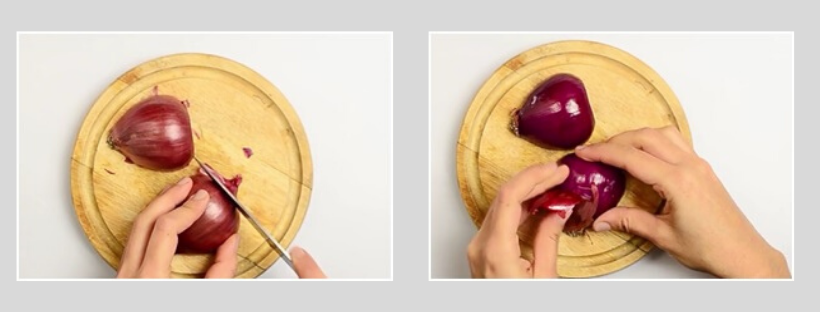
Take one of the onion halves and place it down on the chopping board and trim the stem away. Keep the root end intact. Do the same for the other half of the onion. Peel the paper skin away till find the moisture part of the onion.
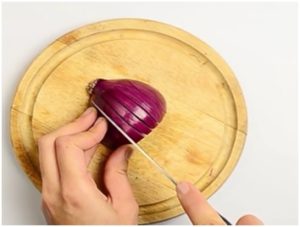
Now hold the onion with one hand on the chopping board and with the other hand press on the tip of the knife into the root end and slice downwards towards the stem end. Continue doing this from one side of the onion to the other to get the lengthwise slices. Avoid cutting through the root as of to keep the onion attached at the root side.
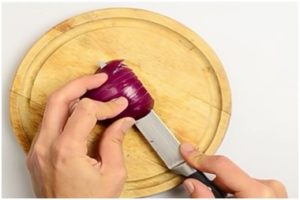
Cut straight across the lengthwise cuts, from stem end towards the root end (width-wise). If you need smaller pieces cut several times.

Cut the onion from the top down width-wise. Start cutting from the edge and continue cutting towards the root. The pieces of onion will start detaching from the root. Once you are done, you’ll have a thinly cut onion. Take out the root piece. Repeat the process for the other half.
How to slice an onion

As like first step of chopping an onion cut the onion half lengthwise so that both the part has a root at one end and a stem at the other, cut off the stem and the root. Peel the paper skin away till you find the moisture part of the onion. Take one of the onion halves and place it down on the chopping board. Start cutting at one side of the onion and finish at another. You can slice the onion width-wise or lengthwise as you like to. Repeat the process for the other part as well.
How to Cut Onion Rings
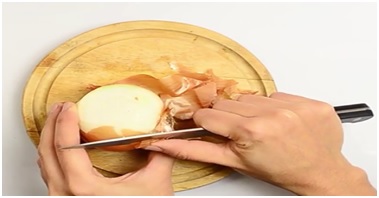
Take an onion and peel off the papery skin with the help of your finger and knife. Place it on chopping board and cut off the stem and the root.

Start slicing from the root side and finish at the stem end. You will get round shaped onion slices, now you gently pop the rings out of each other using your finger.
How to Dice an avocado
Dicing an avocado is very simple and easy. To dice an avocado all you need is a sharp knife and a chopping board.
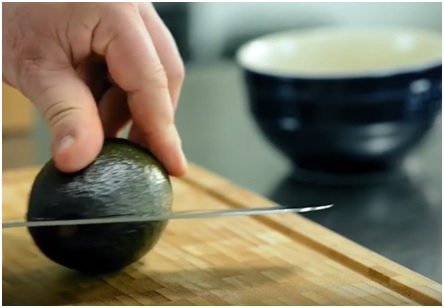
Take an avocado and place it lengthwise on a chopping board. Make a simple cut sidewise into the avocado using a big, sharp knife and slice all way around.

Now hold the avocado horizontally on your hand and twist the upper part of the avocado. The upper half will be apart and you can see the avocado seed in the middle of the fruit. To remove the seed take the heel of the knife and tap on the seed. Twist the seed and pull it out.

Slice each halves of avocado lengthwise to another four five pieces. Insert the tip of the knife just under the skin of one piece of avocado and slowly pull the peel away.
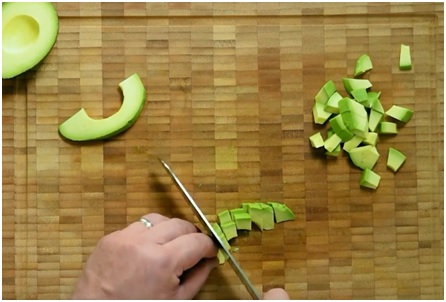
Place the peeled piece flat-side down on the board and hold the piece with a claw-like grip then cut into dices.
How to cut cauliflower into bite-size pieces

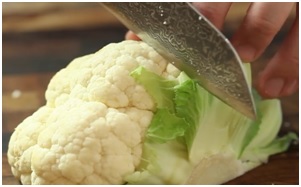
You will need a medium size sharp knife and chopping board to cut a cauliflower into bite-size pieces. All you need to do is place the cauliflower head side up on a chopping board and cut it in half and then into quarters through the core.

You will see the florets are attached to the central core by their own stems. Cut the core by running through the knife between the florets and stem and the cauliflower will fall apart into large florets. If the florets are too big for your required size then you can cut them into more small pieces or just pull them apart with your fingers.
Sliced and Diced Tomatoes
Tomatoes are used in a lot of recipes. Both sliced and diced tomatoes are used in different recipes. It will depend on our need which will we produce.
Sliced tomatoes
Slicing tomatoes is a quick and simple process.
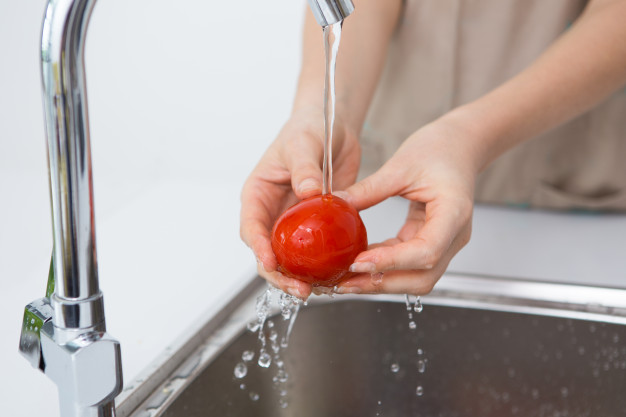
Before slicing, tomatoes should always be washed properly under the faucet. Make sure to remove any dirt and debris. Peel off any stickers as well.

A teaspoon or a small spoon can be used to remove the core of a tomato. Simply we will have to insert the tip of the spoon into the tomato’s stem and digging out the stem using the spoon and then discard it.
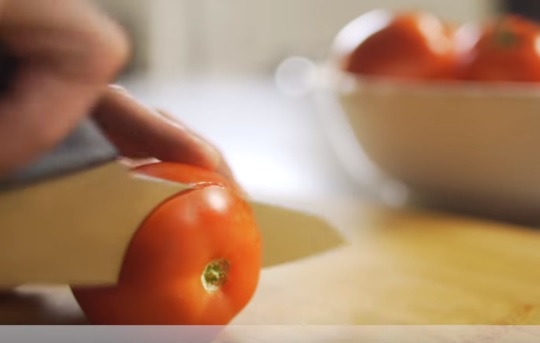
Lay tomato on its side and slice from the top down.
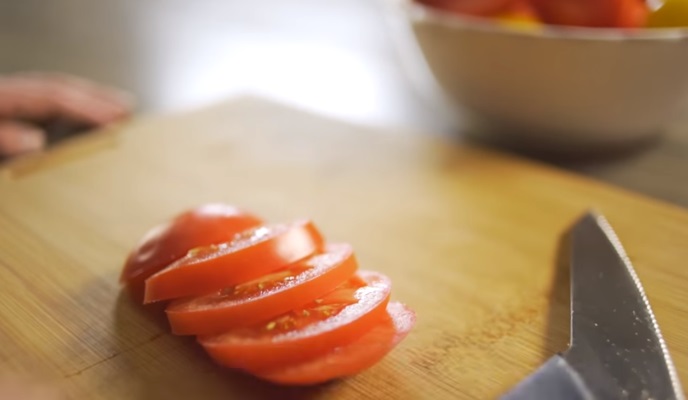
Sliced tomato is ready for salads and more.
Diced tomatoes
Dicing tomatoes is a quick, simple process anyone can master with some practice. Before dicing, tomatoes should be washed properly. Also make sure to remove any dirt and debris.

To dice a tomato we need to first cut the tomato longitudinally into slices. We have to make sure to leave a tiny bit of tomatoes attached to hold it all together.

Then we have to turn it 90 degrees and making another longitudinal cut into a cross section. It is pretty easy to do this if we have a sharp knife otherwise when we start to cut the cross section, the tomato will fall apart.

Then we have to simply make a latitude cut or slice in the tomato and we have cubed tomatoes.
Chopped Garlic
If we chop garlic and reserve it or buy pre-chopped garlic it has a harsh flavor. Whereas, it is wise to keep fresh garlic in a cool place then chop and use it instantly. As garlic is the item that used in so many recipes, so it is important to know how to chop it.

Cut crossway to eliminate the root end of the garlic clove.
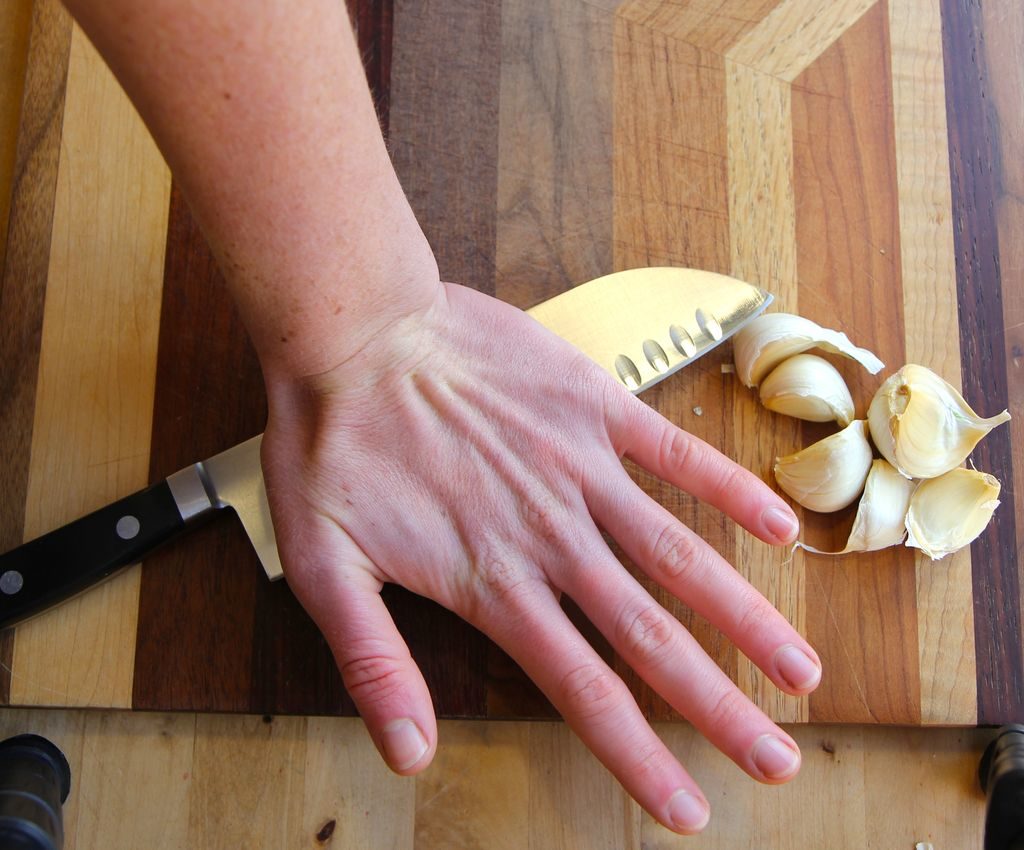
Then press with the palm of your hand to loosen the cloves.
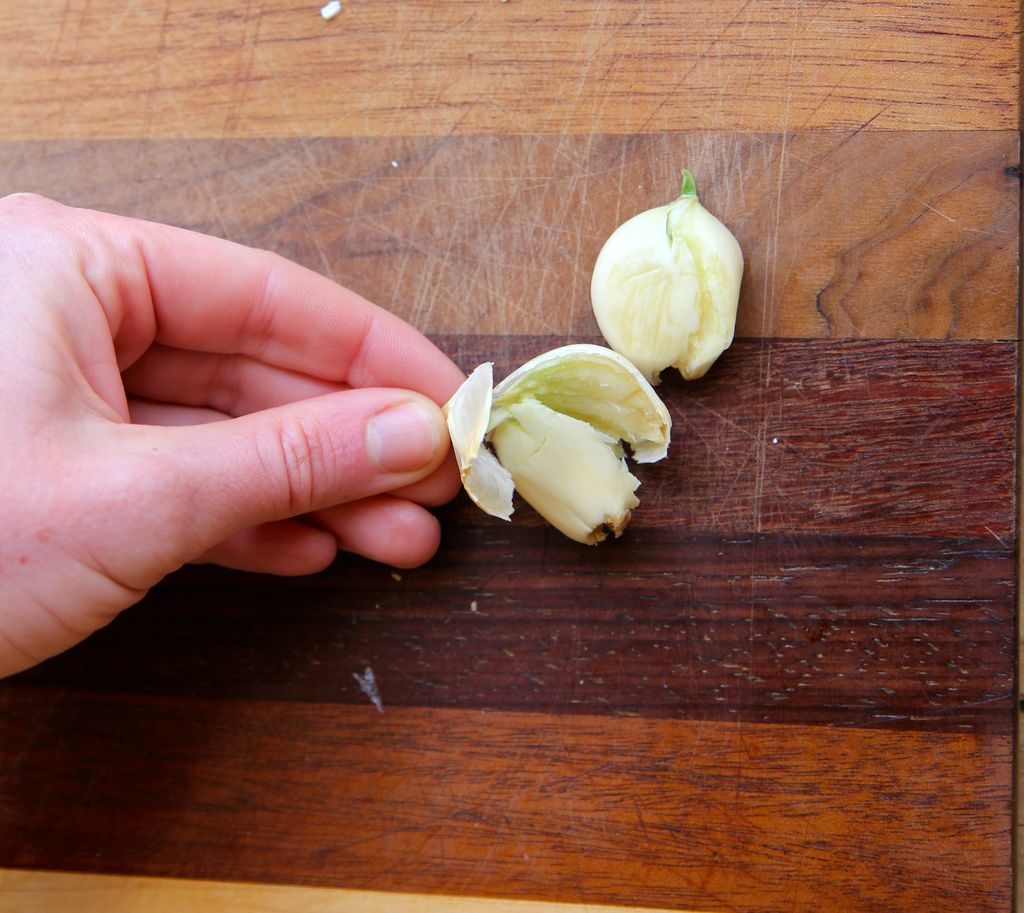
Then uncover the garlic coals.
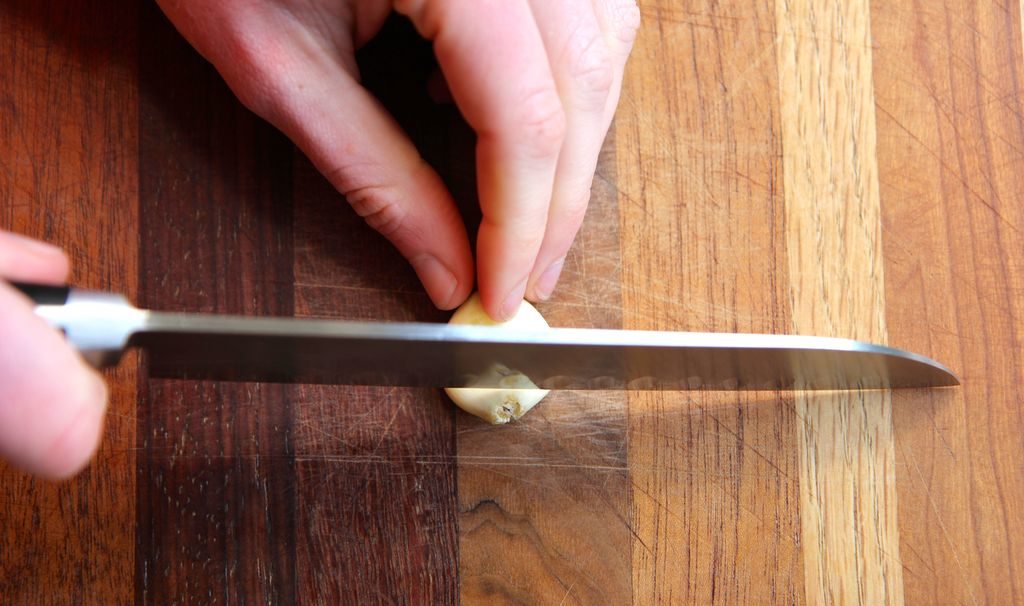
Cut off the dry stem end of the clove.
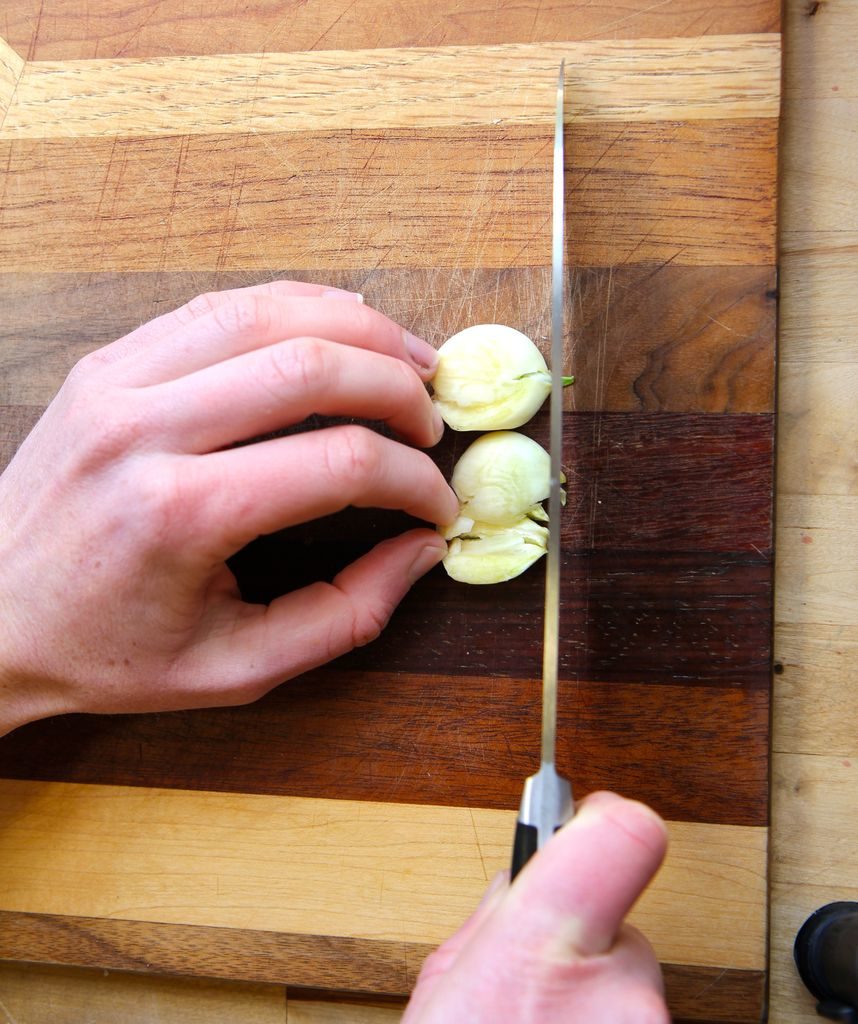
Slice the clove into tiny pieces.


To cut the garlic into tiny pieces turn the knife 90-degrees on the chopping board. Hold the knife handle with one hand and place another hand on the top of the knife blade near the tip. Then rock the blade back and forth above the cloves until the cloves chopped into nearly the same size.
So, now you may learn chopping techniques from the information above with your best budget knife.


